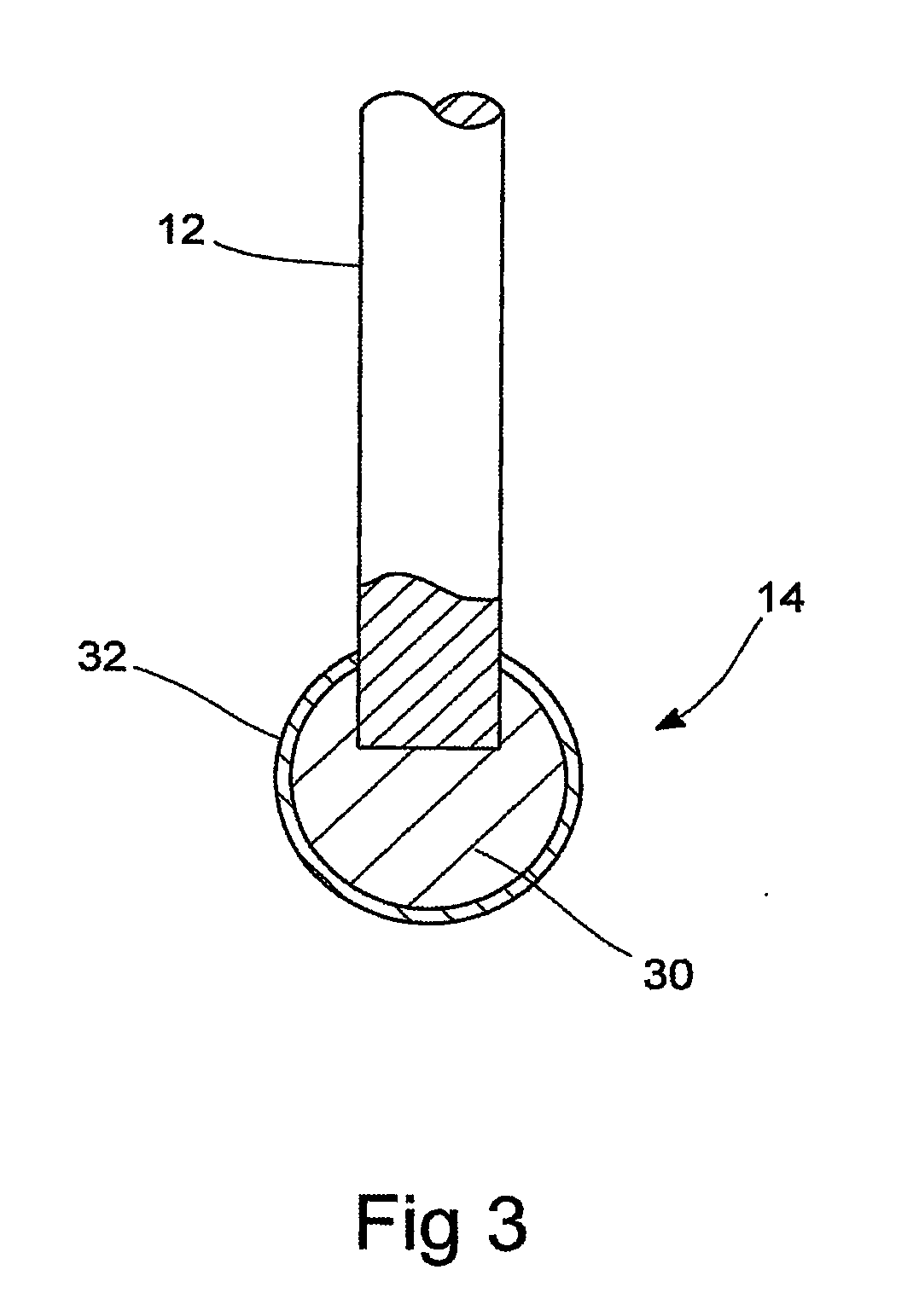Stylus tip for workpiece contacting probe
a technology of contacting probe and stylus tip, which is applied in the field of contact probes, can solve the problems of affecting the shape of the scanning stylus tip being altered, and the hole appearing larger than it is actually, so as to affect the sphericity of the stylus tip
- Summary
- Abstract
- Description
- Claims
- Application Information
AI Technical Summary
Benefits of technology
Problems solved by technology
Method used
Image
Examples
example 1
[0035] To examine the effect of graphite acting as a solid state lubricant, the commercially available material Purebide PGS100 was used. This material is a sintered silicon carbide composite containing free graphite, available commercially from Morgan Advanced Materials and Technology, 441 Hall Avenue, St Marys, Pa. 15857, USA. It is stated by the manufacturers to be covered by U.S. Pat. Nos. 5,422,322, 5,656,563, 5,976,429 and European Patent No. 746532. Shapes close to spherical (3 mm diameter) were ground, polished and attached to standard stylus stems. In one test, no pick up of aluminium was apparent on the surface of the PGS100 material after scanning for 700 m. In a further test, the stylus tip was examined periodically without removing it from its holding bracket, which enabled the test to be continued after each examination. Up to 7000 m of scanning distance no obvious pick up was detected. Above 7000 m there was some directional pattern in the contact area, but neverthele...
example 2
[0036] Hexagonal boron nitride (hBN) is a naturally lubricious material having a graphite-like crystalline structure. It is often called white graphite. Thus, another example of the invention comprises a stylus tip made from a composite material containing hBN. A suitable material is described in “Fabrication and Microstructure of Silicon Nitride / Boron Nitride Nanocomposites”, T Kusunose, T Sekino, Y H Choa and K Niihara, Journal of the American Ceramic Society, 85, [11] 2678-88 (2002). This is a nanocomposite in which nano-sized particles of hBN are dispersed homogeneously in a matrix of silicon nitride (Si3N4). The material has good machinability, making it easier to fabricate accurately spherical balls for stylus tips than the PGS100 material of Example 1. The fine nanostructure also contributes to this.
[0037] We have found that it is desirable to select a suitable ratio of boron nitride to silicon nitride when using such materials. A sample containing 20% boron nitride was foun...
example 3
[0038] In place of the self-lubricating materials of Examples 1 and 2, a stylus tip may be made from a hard, porous matrix material, impregnated with a low friction material. The material of the porous matrix can be, for example, silicon carbide (SiC), silicon nitride (Si3N4) or zirconia (ZrO2). The low friction material impregnated into it can be polytetrafluoroethylene (PTFE).
PUM
| Property | Measurement | Unit |
|---|---|---|
| distance | aaaaa | aaaaa |
| scanning speed | aaaaa | aaaaa |
| diameter | aaaaa | aaaaa |
Abstract
Description
Claims
Application Information
 Login to View More
Login to View More - R&D
- Intellectual Property
- Life Sciences
- Materials
- Tech Scout
- Unparalleled Data Quality
- Higher Quality Content
- 60% Fewer Hallucinations
Browse by: Latest US Patents, China's latest patents, Technical Efficacy Thesaurus, Application Domain, Technology Topic, Popular Technical Reports.
© 2025 PatSnap. All rights reserved.Legal|Privacy policy|Modern Slavery Act Transparency Statement|Sitemap|About US| Contact US: help@patsnap.com



